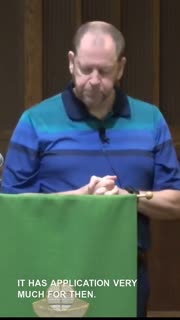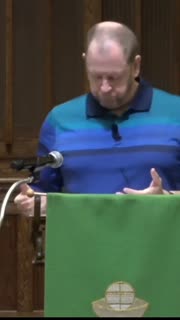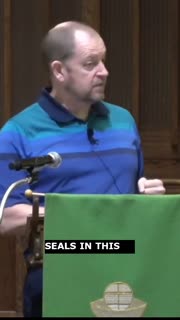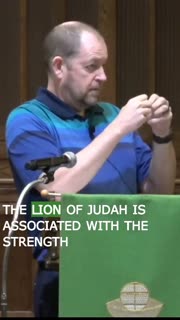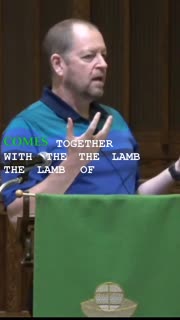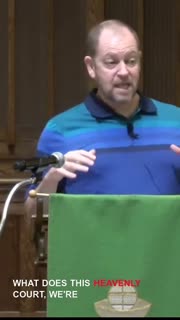Revelation: A Message of Hope and Worship
Devotional
Sermon Summary
Bible Study Guide
Sermon Clips
### Quotes for Outreach
1. "This is a message, a vision, to persecuted churches. And it has all these elements that for us seem rather mysterious. But for a first century, largely Jewish community, these elements would have made some sense. And it is a vision of a final and full and complete revelation from God. Apocalypse means that. It means to reveal a revelation of everything else and all the turmoil that goes through it ends with God's victory and glorious reign." [00:59] (51 seconds)
2. "It has application very much for then. Socio-historic application then. And it has application now. This is where things get a bit tricky because some folks can kind of go crazy with some. I was reading some stuff just this week. Some of the couple of big name pastors in the states, and once again, you know, they're cranking out, this is the end of times happening right now." [02:00] (30 seconds)
3. "So who is that who is this who is this all tribe all nation all people it's it is the it is the essence of this complete and final vision it is what we ultimately dream of in the midst of all the conflicts and struggles in the human story this is the ultimate vision that we we long for and we want a little taste of it in our lives we just want a glimpse of it." [09:51] (35 seconds)
### Quotes for Members
1. "So the seven seals in this book not only define God's authority over this revelation. But. But defines the only power that can break the seal. So who breaks the seal? This is the question that gets asked. And there's angst and crying and wailing. Nobody's going to be able to do this. And then this extraordinary powerful figure, the lion of Judah comes forward." [05:24] (37 seconds)
2. "The lion of Judah is associated with the strength of Israel and the authority by which God is still vested into that strength. And then. And then. And then. Now, out of this, We get this start to get to this reference. And you will know you will recognize this one for unto us a child is born, you remember that passage from Isaiah?" [07:17] (29 seconds)
3. "The lion of Judah comes together with the the lamb the lamb of Christ and the the way this vision is unfurled for us is it's not one or the other it's both together the strength and the power of the lion of Judah with the sacrificial authority atoning authority of the lamb of Christ and this perfect union set against the backdrop of these 24 elders both the 12 tribes of Israel and the 12 elders upon which this emergent Christian force rests." [08:08] (46 seconds)
4. "It's not something that's going to happen tomorrow folks i'm not one of these pastors who's standing up and saying here it is i'm not going to do it i'm not going to do it i'm gonna do it as it comes get yourself ready will you be one of the elect we'll talk about that in my life to just hold on to that that little vision because man it can really be a powerful way to just drive us through all of this." [11:53] (35 seconds)
5. "What does this heavenly court, we're talking about the heavenly court here, what does the heavenly court do? It falls down and worships. you get that? That it isn't, this isn't an intellectual, grand intellectual exercise. It's not the heavenly effect. It's to be worshiped. It's to be praised. It's to be awestruck. And it has had that impact on people through the centuries." [13:02] (38 seconds)
Ask a question about this sermon
1. "This is a message, a vision, to persecuted churches. And it has all these elements that for us seem rather mysterious. But for a first century, largely Jewish community, these elements would have made some sense. And it is a vision of a final and full and complete revelation from God. Apocalypse means that. It means to reveal a revelation of everything else and all the turmoil that goes through it ends with God's victory and glorious reign." [00:59] (51 seconds)
2. "It has application very much for then. Socio-historic application then. And it has application now. This is where things get a bit tricky because some folks can kind of go crazy with some. I was reading some stuff just this week. Some of the couple of big name pastors in the states, and once again, you know, they're cranking out, this is the end of times happening right now." [02:00] (30 seconds)
3. "So who is that who is this who is this all tribe all nation all people it's it is the it is the essence of this complete and final vision it is what we ultimately dream of in the midst of all the conflicts and struggles in the human story this is the ultimate vision that we we long for and we want a little taste of it in our lives we just want a glimpse of it." [09:51] (35 seconds)
### Quotes for Members
1. "So the seven seals in this book not only define God's authority over this revelation. But. But defines the only power that can break the seal. So who breaks the seal? This is the question that gets asked. And there's angst and crying and wailing. Nobody's going to be able to do this. And then this extraordinary powerful figure, the lion of Judah comes forward." [05:24] (37 seconds)
2. "The lion of Judah is associated with the strength of Israel and the authority by which God is still vested into that strength. And then. And then. And then. Now, out of this, We get this start to get to this reference. And you will know you will recognize this one for unto us a child is born, you remember that passage from Isaiah?" [07:17] (29 seconds)
3. "The lion of Judah comes together with the the lamb the lamb of Christ and the the way this vision is unfurled for us is it's not one or the other it's both together the strength and the power of the lion of Judah with the sacrificial authority atoning authority of the lamb of Christ and this perfect union set against the backdrop of these 24 elders both the 12 tribes of Israel and the 12 elders upon which this emergent Christian force rests." [08:08] (46 seconds)
4. "It's not something that's going to happen tomorrow folks i'm not one of these pastors who's standing up and saying here it is i'm not going to do it i'm not going to do it i'm gonna do it as it comes get yourself ready will you be one of the elect we'll talk about that in my life to just hold on to that that little vision because man it can really be a powerful way to just drive us through all of this." [11:53] (35 seconds)
5. "What does this heavenly court, we're talking about the heavenly court here, what does the heavenly court do? It falls down and worships. you get that? That it isn't, this isn't an intellectual, grand intellectual exercise. It's not the heavenly effect. It's to be worshiped. It's to be praised. It's to be awestruck. And it has had that impact on people through the centuries." [13:02] (38 seconds)

